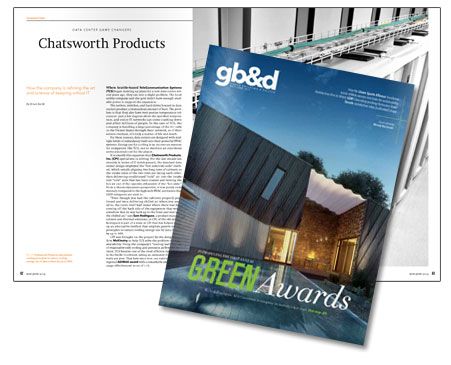
Architects and engineers whose projects include data
centers, should extend the same green design principles used throughout the
building into the data center. This is essential, considering the potential
energy savings that can result from efficient design.
Green Building & Design (GB&D) Magazine recently ran
an article describing how Chatsworth Products (CPI) helped Seattle-based
wireless provider TeleCommunication Systems (TCS), overcome the problem of
limited power availability and become one of the most efficient data centers in
the Pacific Northwest. TCS earned two ASHRAE awards and averages a PUE of 1.15.
The article explains CPI’s “hot aisle/cold aisle” method. This
entails aligning two long rows of cabinets, so the intake sides of the two rows
are facing each other, then delivering conditioned “cold” air into the intake
side “cold” aisle that has been created and venting the hot air out of the
opposite exhaust of the “hot aisle.” From a thermodynamics perspective, it was
pretty rudimentary compared to the high-tech HVAC acrobatics that LEED
designers are used to.
Read the full article or the case study.
The Environmental Protection Agency (EPA)
describes green building (also known as sustainable or high performance
building) as the practice of creating structures and using processes that are
environmentally responsible and resource-efficient throughout a building's
life-cycle, from siting to design, construction, operation, maintenance,
renovation and deconstruction. The common objective is that green buildings
should be designed to reduce the overall impact of the built environment on
human health and the natural environment by:
- Efficiently using energy,
water and other resources
- Protecting occupant health
and improving employee productivity
- Reducing waste, pollution
and environmental degradation
As far back as the early nineteenth century, building designers
were considering and implementing environmental improvements but according to the
EPA, the modern green building movement gained momentum during the 1970s oil
crisis. This crisis spurred research to improve energy efficiency and resulted
in key milestones such as the Energy Star Program launched in 1992, the
founding of United States Green Building Council (USGBC) in 1993 and the launch
of the Leadership in Energy and Environmental Design (LEED) in 1998, to name a
few.
Today, green building practices are widely implemented on
many levels and often result in both environmental and cost savings benefits.
According to the EPA’s “Why Build Green” web page, economic
benefits can include:
- Lower operating costs
- Improved occupant
productivity
- Optimized life-cycle
economic performance
It is easy to see how these benefits translate into the data
center environment and why so many organizations are reaping the rewards of
progressive design and implementation. CPI’s Technical Staff assists customers with
implementing solutions to meet very specific requirements. Thorough planning
and CFD modeling helps ensure high performance results. Give CPI the
opportunity to make your data center a success by contacting a local CPI Sales Manager.
Kim Ream, Marketing Project Manager